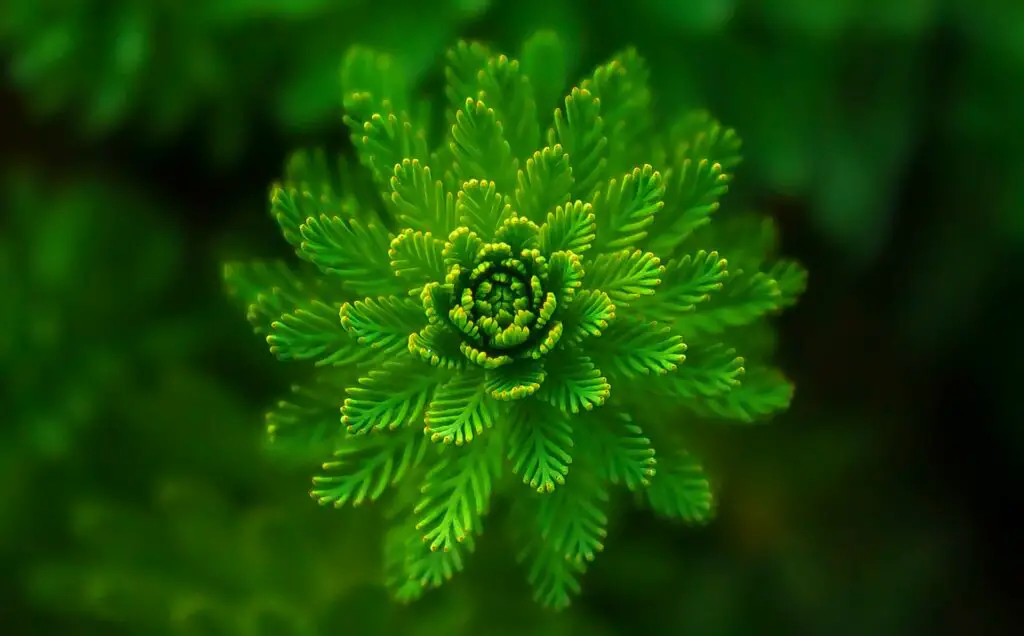Good oxygenating water plants to choose for your pond are: hornwort, waterweed, anacharis, parrot’s feather, water starwort.
In aquatic ecosystems, the role of oxygenation cannot be overstated. Sufficient oxygen levels are vital for the survival of various aquatic organisms, from microscopic bacteria to amphibians, reptiles and fish. And in this crucial process, water plants emerge almost as heroes. They possess the remarkable ability to oxygenate their surroundings, creating a thriving habitat for all forms of aquatic life.
Throughout this guide, we will explore various types of oxygenating water plants, their characteristics, and how to select and cultivate them. We will look into the benefits of enhancing oxygenation in your aquatic environments and provide practical tips on maintaining healthy water plants.
Please keep in mind that depending on the size of your pond, surrounding temperature, if and how many fish you have, having water plants as the only source of oxygen may not be sufficient! It’s a good practice to incorporate a small waterfall, a fountain, or air stones in your project, to make sure you provide enough oxygen for your animals.
How plants produce oxygen?
First and foremost, let’s talk about photosynthesis. But don’t worry, I won’t go too deep into the process! Photosynthesis is the process by which plants, algae but also some bacteria convert sunlight, carbon dioxide, and water into glucose, and release oxygen as a byproduct. This happens thanks to chlorophyll, a pigment found in cells of those organisms, that captures sunlight and drives the synthesis of these essential molecules.
Oxygenating water plants
There are several types of oxygenating water plants that are commonly used in ponds and water gardens. Here are some of the most popular ones:
Hornwort (Ceratophyllum demersum)
Hornwort is a popular oxygenating plant known for its feathery, bright green foliage. It thrives in a wide range of water conditions. This versatile plant can be planted in the substrate or left floating, providing excellent oxygenation and habitat for aquatic organisms.
Waterweed (Elodea canadensis)
Waterweed is a fast-growing plant with long, slender leaves that create a dense underwater canopy. It is well-suited for ponds and aquariums, effectively oxygenating the water. Waterweed can be planted in containers or allowed to float freely.
Anacharis (Egeria densa)
Anacharis, also known as Brazilian waterweed, is a robust oxygenator that forms dense clusters of fine, green leaves. It is an excellent choice for ponds and larger water bodies, providing oxygenation and nutrient absorption. Anacharis can be planted in substrate or left floating.
Parrot’s Feather (Myriophyllum aquaticum)
Parrot’s Feather is a visually striking oxygenating plant with feathery, bright green foliage that resembles a parrot’s feathers. It adds aesthetic appeal to your pond while contributing to oxygenation. It can be planted in shallow areas or allowed to float. I reallz like its look – you can see it in the post featured picture. 🙂
Water Starwort (Callitriche stagnalis)
Water Starwort is a small, delicate plant with star-shaped leaves that provide oxygenation and habitat for aquatic organisms. It can be planted in the substrate or allowed to float freely, making it suitable for ponds and smaller water features.
If you want to know more about them, have a look at our article.
Selecting and Cultivating Oxygenating Water Plants:
Choosing the right oxygenating water plants for your pond is important for maintaining a healthy aquatic ecosystem. When selecting them, it is good to consider the following:
- Compatibility with your water environment (pond, aquarium, etc.).
- Light requirements: Some plants prefer brighter light, while others can thrive in shade.
- Growth rate: Choose plants that match your desired growth rate and maintenance level
- Ensure a suitable water depth and temperature for the chosen plants.
- Provide adequate lighting conditions based on the plant’s requirements.
Tip: plant them in containers or secure them with weights in the substrate, this will make it easy for you to get them out if they need a trim or when you clean the pond.
Maintaining Healthy Water Plants
- Regularly check and maintain water quality parameters, such as pH and nutrient levels.
- Prune or thin out overgrown plants to prevent overcrowding.
- Control algae growth through proper nutrient management and light regulation by e.g. creating a shade or even covering parts of the pond.
- Remove decaying plant material to avoid nutrient imbalances.
- Inspect for pests or diseases and take appropriate measures for control.
In conclusion, understanding the types, characteristics, cultivation, and maintenance of oxygenating water plants is crucial for creating a healthy and balanced aquatic environment.
From popular options like Hornwort and Anacharis to lesser-known varieties like Water Starwort, each type of oxygenating water plant offers distinct benefits and growth patterns.
By selecting the right plants, ensuring proper cultivation techniques, and implementing effective maintenance practices, you can promote optimal oxygenation, improve water quality, and support a thriving ecosystem in your pond or aquarium.
Remember to consider factors like sunlight, water depth, and water quality when choosing plants, and regularly monitor and adjust maintenance routines to ensure their health and vitality.
By following these guidelines, you can create a beautiful and sustainable aquatic habitat that benefits both the plants and the diverse array of aquatic life they support.


